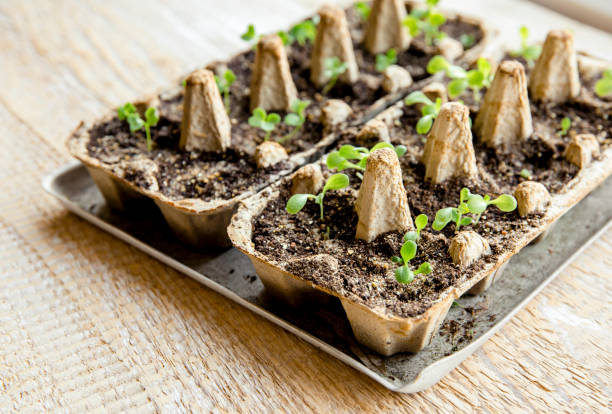Starting your own vegetable garden from seed is a rewarding venture that can provide fresh produce straight from your garden or balcony. Using recycled egg cartons and bread bags in the process not only saves money, but also contributes to a more sustainable gardening practice. This guide will walk you through the steps to growing a thriving vegetable garden from seed using these everyday items.
Step 1: Gather your materials
Egg Cartons: Empty egg cartons, preferably cardboard, to serve as biodegradable starter trays.
Recycled Bread Bags: Clean, empty bread bags to use as mini greenhouses to maintain humidity.
Seeds: Choose a variety of vegetable seeds according to your preferences and the season.
Soil: Seed starter mix or a homemade mixture of peat moss, vermiculite and compost.
Water: A spray bottle or watering can with a fine nozzle to gently water the seeds without moving them.
Labels: Something to label your egg cartons, like sticks or small pieces of paper, to keep track of what you’ve planted.
Step 2: Prepare the egg boxes
Soil preparation: Fill each compartment of the egg carton with your seed starting mix, leaving about half an inch of space at the top.
Sowing Seeds: Follow the instructions on your seed packets for depth and spacing. Plant 2-3 seeds in each compartment to ensure germination.
Watering: Gently water the soil with a spray bottle, making sure it’s moist but not soggy.
Step 3: Create a Mini Greenhouse
Cover: Once you’ve sown your seeds, place the entire egg carton inside a recycled bread bag. This will create a mini-greenhouse effect, retaining moisture and heat to aid germination.
Ventilation: Make a few small holes in the bread bag for air circulation. This step is crucial to prevent mould growth.
Step 4: Germination
Placement: Place your mini greenhouses in a warm, bright place, but not in direct sunlight, which could overheat your seeds.
Monitoring: Check seed humidity daily, and water as needed. Watch out for signs of germination, which usually occur within 1 to 2 weeks, depending on the type of vegetable.
Step 5: Plant care
Thinning: Once seedlings emerge, thin them by removing the weakest seedlings, leaving the strongest in each compartment. This ensures that the remaining seedling has enough space and resources to grow.
Transplanting: When your seedlings have developed their second set of true leaves and are strong enough, they are ready to be transplanted into larger pots or directly into your garden. If you’re using cardboard egg cartons, you can cut out the compartments and plant them directly in the soil. The cardboard will decompose naturally.
Step 6: Acclimatization
Hardening off: Before transplanting outdoors, acclimatize your seedlings by gradually exposing them to outdoor conditions. Start with an hour a day, gradually increasing the time over a week to avoid shock.
Step 7: Transplanting and ongoing care
Transplanting: Choose a cloudy day or late afternoon to minimize transplanting stress. Carefully remove the seedlings from the egg cartons, taking care not to damage the roots, and plant them in their designated locations in your garden or larger containers.
Watering: Water your transplanted seedlings abundantly after planting and continue to water them regularly.
Care: Monitor your plants for pests and diseases. Use organic methods to manage any problems.
Starting your vegetable garden from seed using recycled egg cartons and bread bags is a great way to embark on a sustainable gardening approach. It’s an approach that not only reduces waste, but also brings the satisfaction of growing your own food from scratch. With patience and care, you’ll soon be able to enjoy the fruits (and vegetables) of your labor, fresh from your garden to your table


Heya i’m for the first time here. I found this board and I find It truly useful & it helped me out much.
I am hoping to present one thing again and aid others like you aided me.